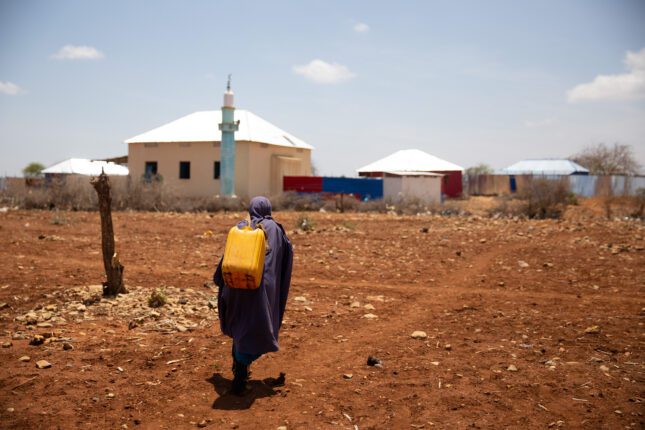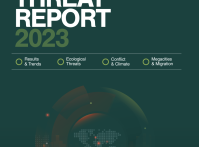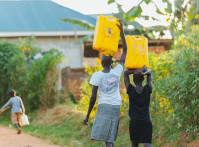-
No Peace at COP30? Why That’s a Risk the World Can’t Afford
November 10, 2025 By Nazanine MoshiriAs COP30 in Belém nears, leaders are calling it the “implementation summit.” Trillions of dollars in climate funding are at stake in Brazil in mid-November. Every sector, from forests to AI, has dedicated Thematic Days. However, one critical issue is noticeably missing from the official agenda: peace.
Without it, infrastructure collapses, aid can’t reach the people who need it, and climate goals unravel in the face of violence, displacement, and state failure. Yet peace and security remain politically sensitive in the UN climate process: too close to foreign policy for some, and too far from emissions targets for others.
Still, Brazil’s COP30 CEO, Ana Toni, is saying what others won’t. As she told The Guardian: “Climate is our biggest war… it’s here for the next 100 years. We can’t let other wars distract us from the bigger fight we need to have.”
Across much of Europe, defense spending is rising while climate development and aid budgets are being squeezed, and peacebuilding is being pushed aside. Yet implementation without peace is impossible. Climate plans collapse where conflict reigns, and until peacebuilding is treated as climate action, both agendas will fail.
265 Million Displaced and Counting
In 2024 alone, disasters forced people to flee their homes 45.8 million times—the highest annual figure ever recorded, according to the Internal Displacement Monitoring Centre. Over the last decade, nearly 265 million forced movements have occurred across 210 countries. These are not natural disasters. They are systemic failures, driven by inequality, poor governance, and a warming planet.
Yet funding to meet this challenge remains skewed. UNEP estimates that global climate adaptation costs between $187–359 billion a year, but the fragile states which often the most vulnerable to climate crises receive only a tiny fraction of that sum. Donors consider them too risky.
Yet these are precisely the places where climate action can do the most good. If climate plans are made conflict-sensitive, they can strengthen peace and stability instead of deepening divides.
In our work at the Berghof Foundation, we’ve seen this firsthand. In Yemen, shared environmental challenges like water scarcity have opened channels of dialogue where politics long failed. In Somalia, women peacebuilders are using local climate initiatives to build trust between clans. And in Iraq’s Basra region, communities have shown that adaptation only works when it is tied to governance and accountability.
These efforts prove that environmental cooperation can unlock political cooperation too. Peace, governance, and climate adaptation aren’t separate tracks: they are deeply connected.
What I Saw –and What the Summits Miss
In Somalia, I have met women fleeing both droughts and armed groups that control water. In the Sahel, pastoralists were pushed off ancestral land by erratic rains and violence. In North Africa, I spoke to young people risking their lives to reach Europe, driven by climate shocks, hunger, and conflict. These are the lived realities behind the statistics; they rarely make it into summit halls.
And for any leader who thinks this is a distant issue, look to Brazil itself. Conflict over land, attacks on Indigenous leaders, and water disputes linked to mining and hydropower have all risen in recent years.
As COP30 host, Brazil can lead by example to show how peace and climate resilience must advance together. It has the tools and the platform to lead at COP30, by cracking down on environmental crime, backing Indigenous and local communities, and putting people at the center of climate action.
Peace Can Still Be Brought Into the Frame. Here’s How.
First, make sure climate plans ease existing tensions, rather than fuel them. This is especially important in places already torn by conflict. In Somalia, years of drought left communities competing for dwindling water supplies, but where local leaders and NGOs worked together to rebuild wells and manage shared water points, those same climate projects helped rebuild trust between clans and strengthen cooperation across districts. In Cameroon’s Far North, community-based early warning committees now bring herders, fishers, and farmers together to monitor rainfall and mediate disputes over water. This effort is a reminder that inclusive adaptation can calm tensions long before conflict takes root.
Second, peacebuilders and humanitarians need a seat at the negotiating table, not just on the sidelines. In Kenya’s Rift Valley, peacemakers have supported dialogues alongside adaptation planning, helping herders and landowners agree on migratory routes and water-sharing rules during droughts. Those efforts encouraged cooperation between communities and county authorities. Likewise, in Iraq’s Basra region, communities helped restore wetlands which helped ease tensions over water use between farming and industrial communities—proof that adaptation can be a bridge to dialogue where politics have failed.
Third, how these initiatives are financed, and who actually receives the funds, is equally important. Donor bureaucracy and risk aversion mean that countries most exposed to drought and floods receive the least support. Reform is overdue. Donors and governments must simplify access to funds and design financing that fits fragile contexts rather than penalizing them for instability. Flexible, low-barrier funding should reach local people directly, especially women, youth, and displaced groups. They are the people already adapting with the fewest resources.
Finally, peace and climate action must be treated as interdependent, not parallel agendas. The evidence is there. When adaptation, governance, and inclusion advance together, they deliver both resilience and peace. Bringing that understanding into the COP30 process is not just aspirational. It is essential. Because without peace, climate investment cannot deliver the stability or results the world so urgently needs.
Nazanine Moshiri is a Senior Climate & Peace Advisor at the Berghof Foundation. She is a former journalist and senior climate analyst for International Crisis Group, and she also has served as a UN expert on Somalia.
Sources: Berghof Foundation; Devex; Euro News; The Guardian; Internal Displacement Monitoring Centre; International Crisis Group; ODI Global Security; Council Report; United Nations; World Food Programme
 A Publication of the Stimson Center.
A Publication of the Stimson Center.









